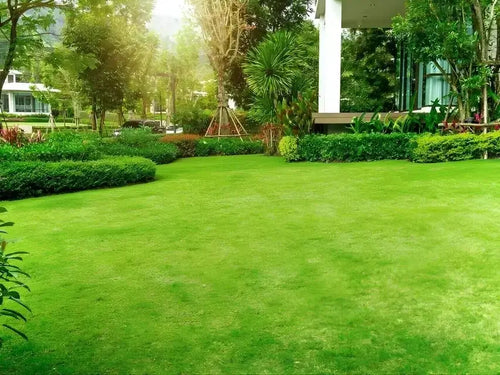Exploring Moss Varieties as Alternatives to Grass Lawns
Grass lawns have long been famous for landscaping, but there has been a growing interest in more sustainable and low-maintenance alternatives in recent years. Live mosses have unique textures, vibrant shades of green, and the ability to thrive in various conditions, have emerged as compelling options. Among the diverse range of moss varieties available, carpet moss, cushion moss, fern moss, and lawn mosses stand out as fascinating alternatives to traditional grass lawns.
Carpet Moss (Hypnum spp.)
Carpet moss, belonging to the Hypnum genus, is a versatile and visually appealing option for replacing grass lawns. Its name comes from its growth habit, forming dense, low carpets that create a lush and inviting ground cover. Carpet moss is well-suited for shady or damp areas where grass might struggle. Its ability to hold moisture and tolerate light foot traffic makes it an ideal choice for pathways, rock gardens, and between stepping stones. One of the benefits of carpet moss is its ability to retain moisture and contribute to moisture regulation in its environment, making it ecologically valuable.
Cushion Moss (Leucobryum spp.)
Cushion moss, known scientifically as Leucobryum, is another intriguing alternative. Its distinctive appearance, characterized by its cushion-like growth habit, adds a touch of enchantment to landscapes. Cushion moss creates a comfortable surface that is soft and visually appealing, making it suitable for creating seating areas or play spaces. Due to its robust nature and tolerance to varying conditions, cushion moss can be incorporated into garden designs to provide an unexpected and captivating element. Its adaptability and resilience are assets in areas with inconsistent sunlight and moisture.
Fern Moss (Thuidium spp.)
Fern mosses, part of the Thuidium genus, mimic the delicate fronds of ferns, adding an ethereal quality to outdoor spaces. These mosses often form in lush, intricate patterns resembling miniature forests. Fern moss can create texture and depth in landscaping, creating a visually pleasing environment. With their affinity for moist environments and partial shade, fern mosses can thrive in areas where grass might struggle to grow. Incorporating fern moss into shaded corners or under trees can provide an enchanting visual contrast.
Lawn Mosses (Bryum spp. and Others)
Lawn mosses encompass various species, including those from the Bryum genus, and are particularly well-suited for replacing grass lawns. These mosses form a dense, low-maintenance carpet that requires minimal watering and mowing, reducing the ecological footprint associated with traditional yards. Lawn mosses often establish themselves in areas with compacted soil or poor drainage, contributing to soil health by preventing erosion and promoting water absorption. Their adaptability to various conditions and resistance to foot traffic make them a compelling option for ornamental and functional purposes.
Benefits of Moss Lawns
Choosing mosses as alternatives to grass lawns offers numerous benefits that align with modern landscaping trends and sustainability goals:
Low Maintenance: Moss lawns require significantly less maintenance compared to grass lawns. They don't need regular mowing, watering, or fertilization, saving time, effort, and resources.
Water Efficiency: Mosses are highly efficient at retaining water, reducing the need for frequent irrigation. This water-conserving trait makes them an excellent choice in regions prone to drought.
Biodiversity: Moss lawns can create microhabitats that support diverse insect species, contributing to local ecosystems. They promote biodiversity by providing shelter and food sources for small creatures.
Aesthetic Appeal: The unique textures and shades of green offered by different moss varieties add a touch of elegance and charm to landscapes. Moss lawns can be tailored to fit various design preferences.
Erosion Control: Mosses help prevent soil erosion due to their dense growth habit. This is particularly valuable on slopes or areas prone to runoff. Carbon Sequestration: Mosses contribute to carbon sequestration, aiding in reducing greenhouse gases in the atmosphere.
As the desire for sustainable landscaping grows, mosses' versatility and ecological benefits become more apparent. Carpet moss, cushion moss, fern moss, and lawn mosses present captivating alternatives to traditional grass lawns. These moss varieties offer a range of textures, growth habits, and visual appeals that can enhance the aesthetic value of outdoor spaces while requiring minimal maintenance and resources. By considering these alternatives, homeowners and landscapers can contribute to more eco-friendly and visually striking landscapes.



















































